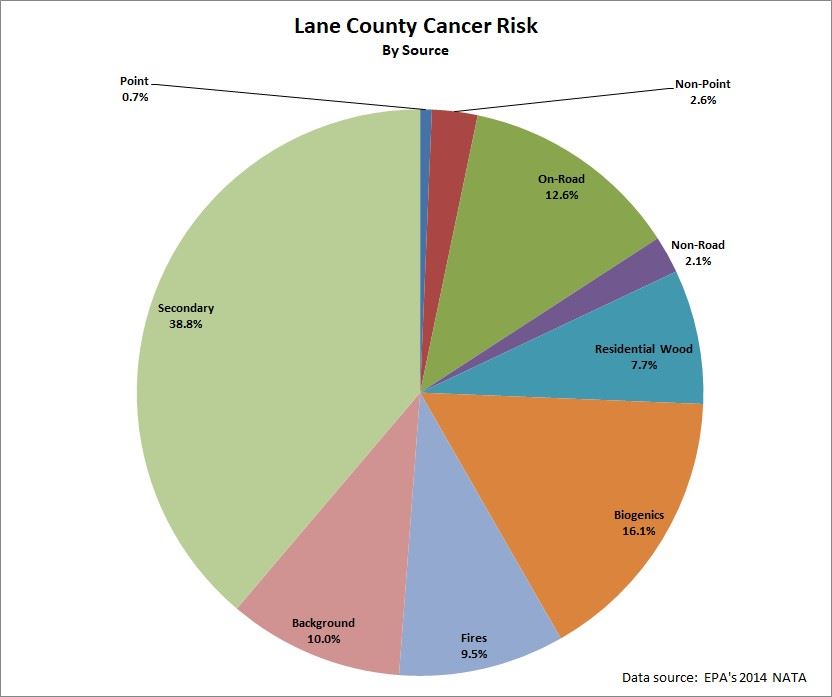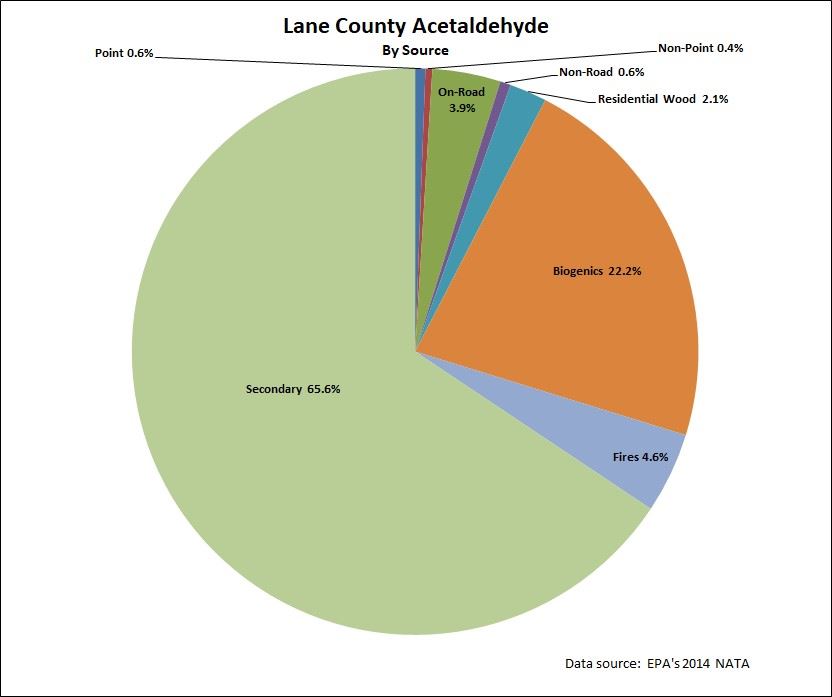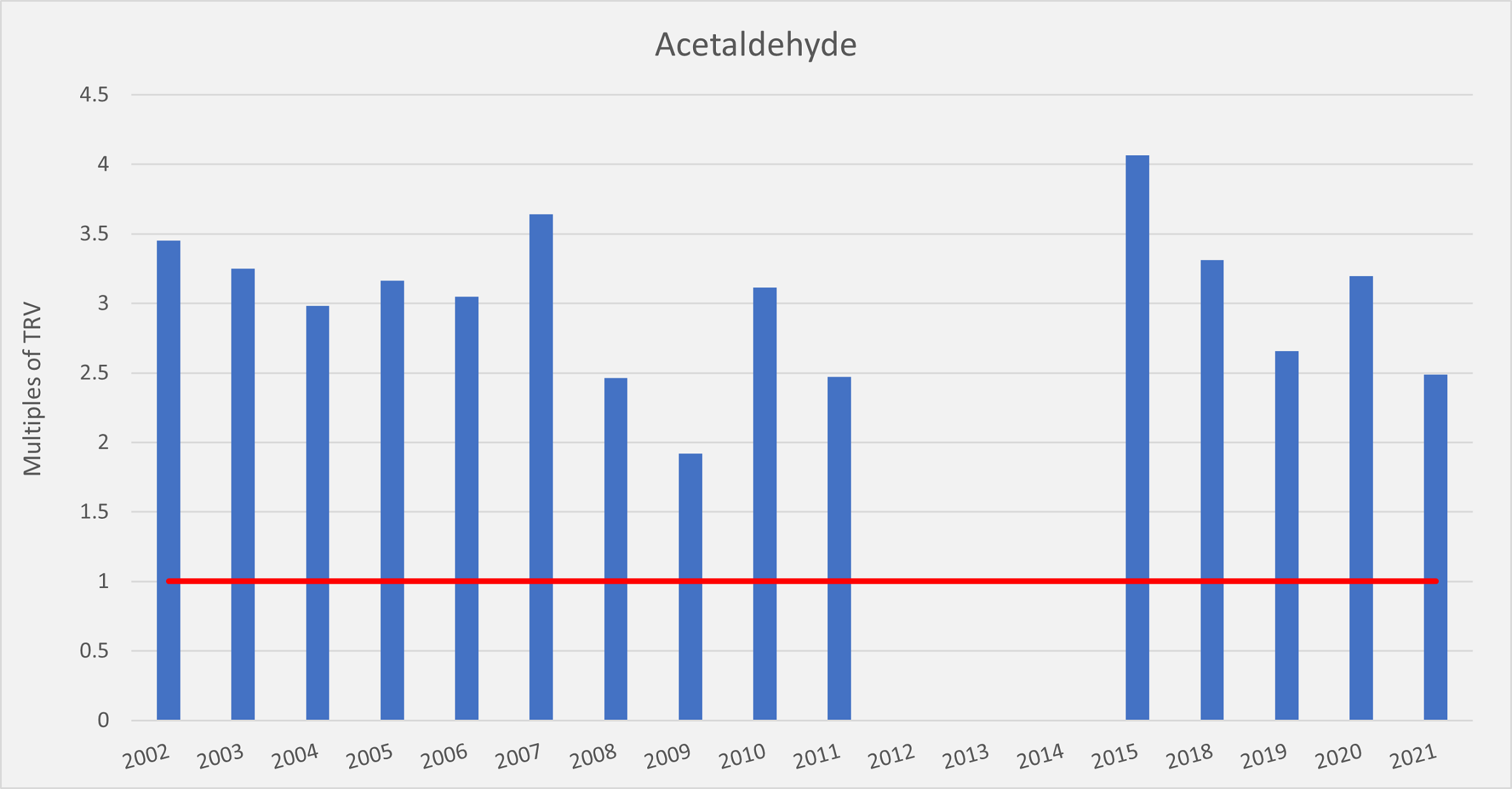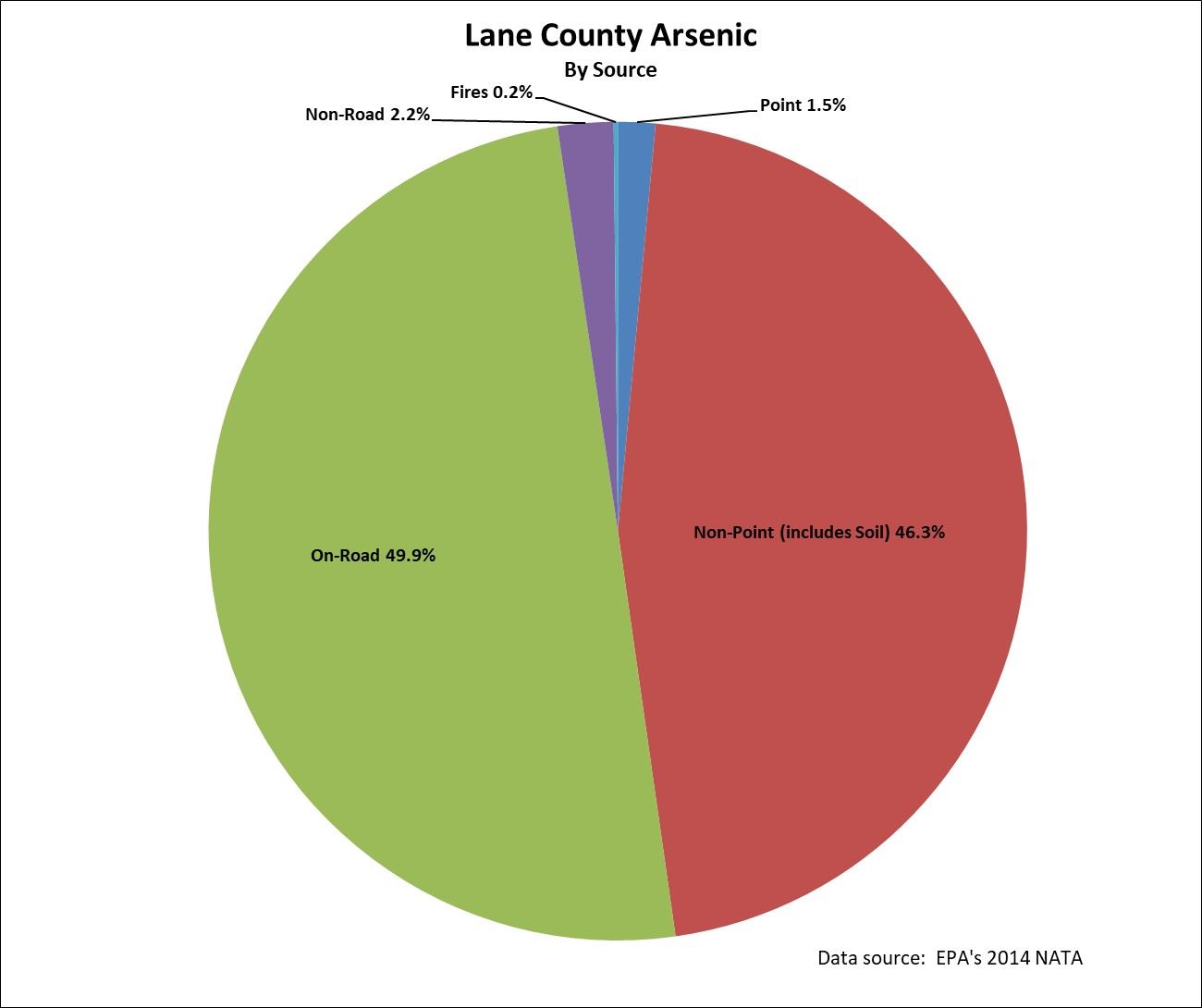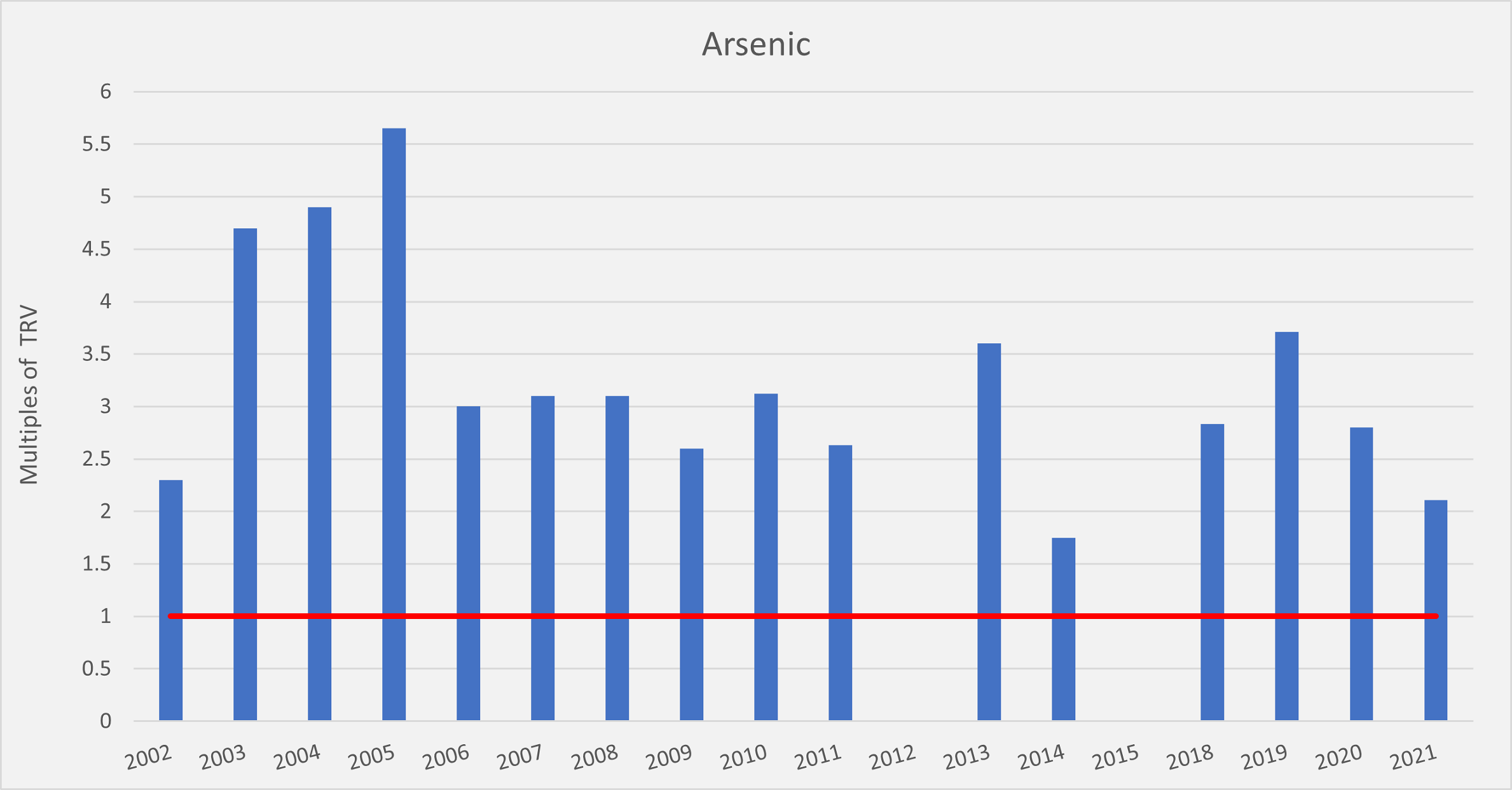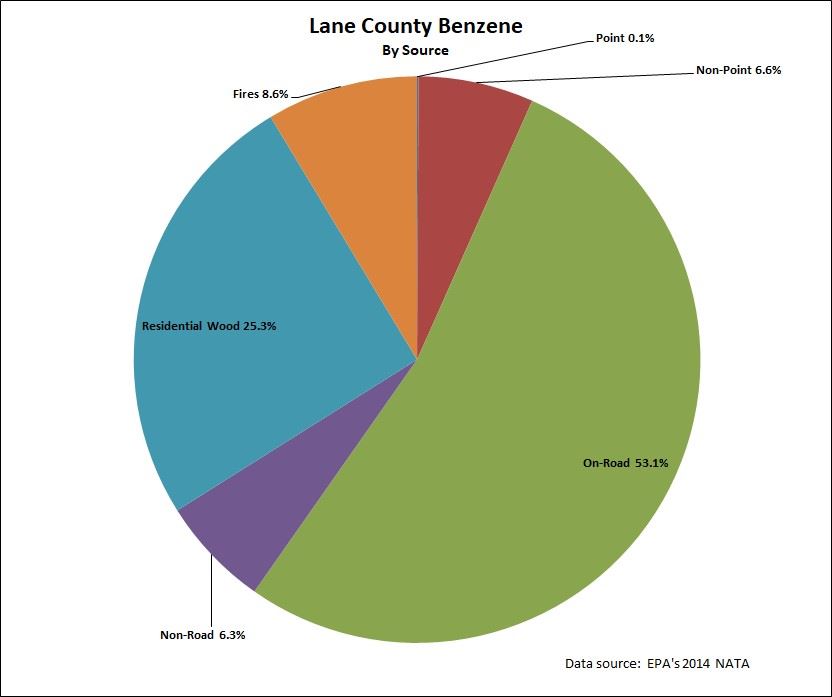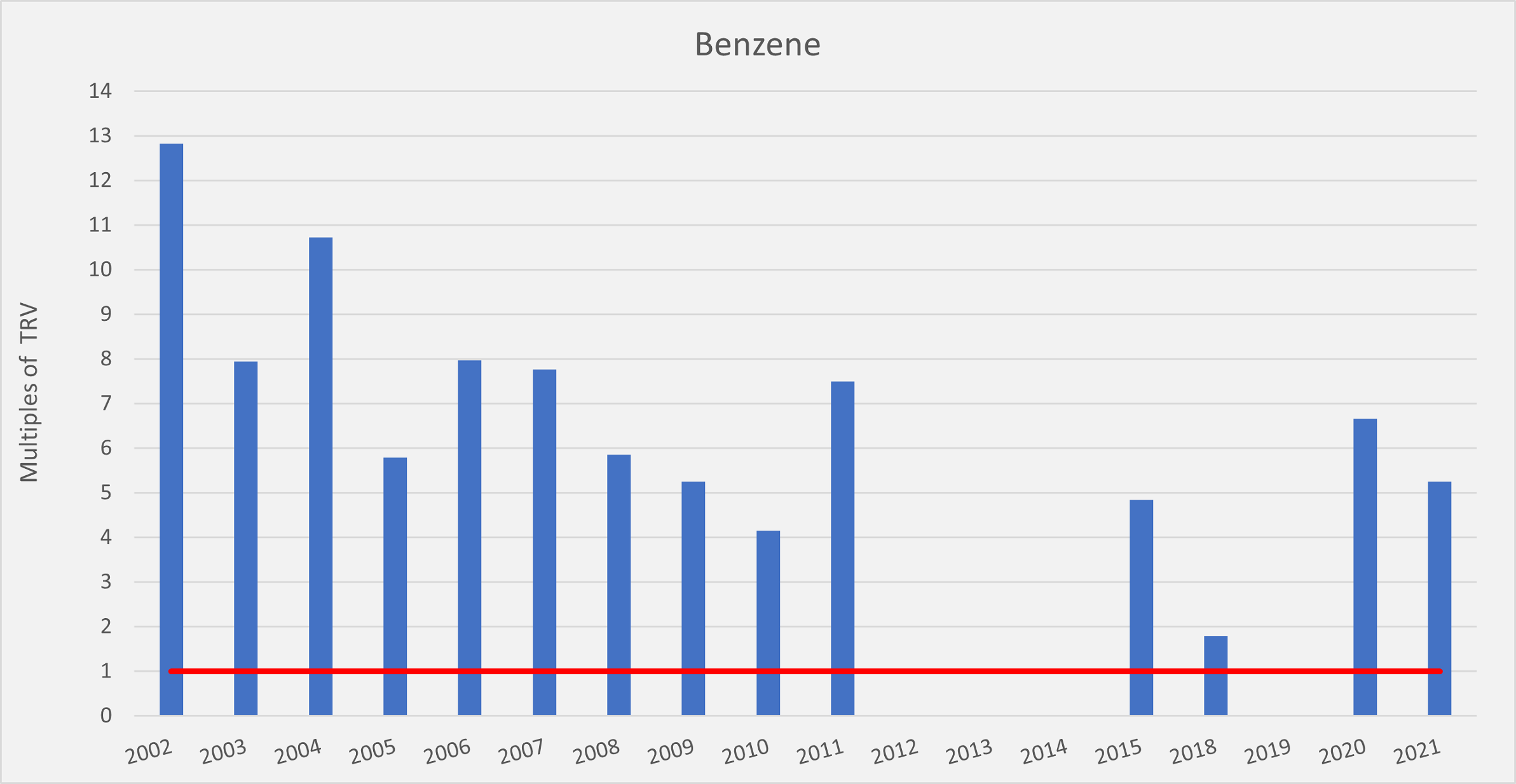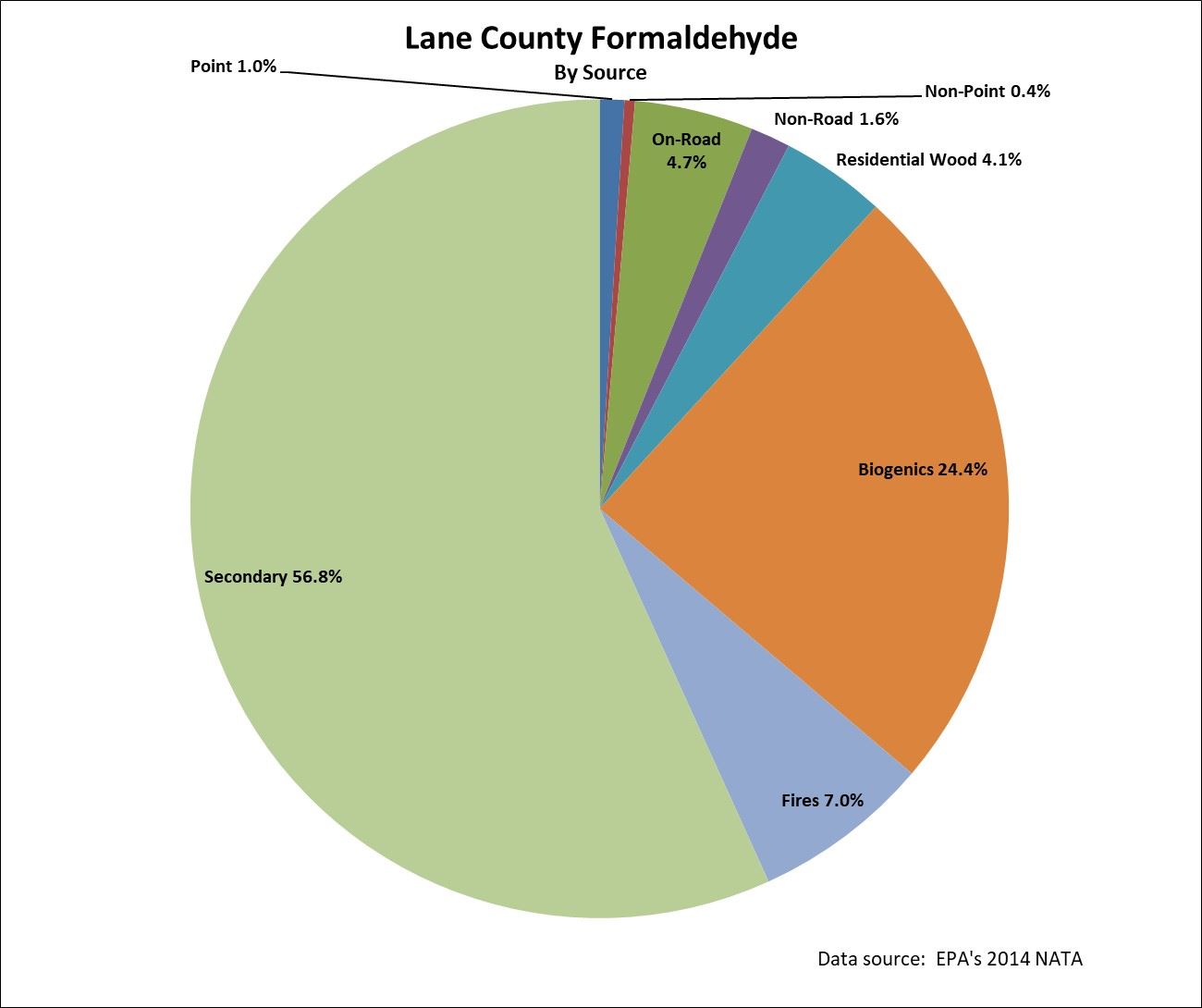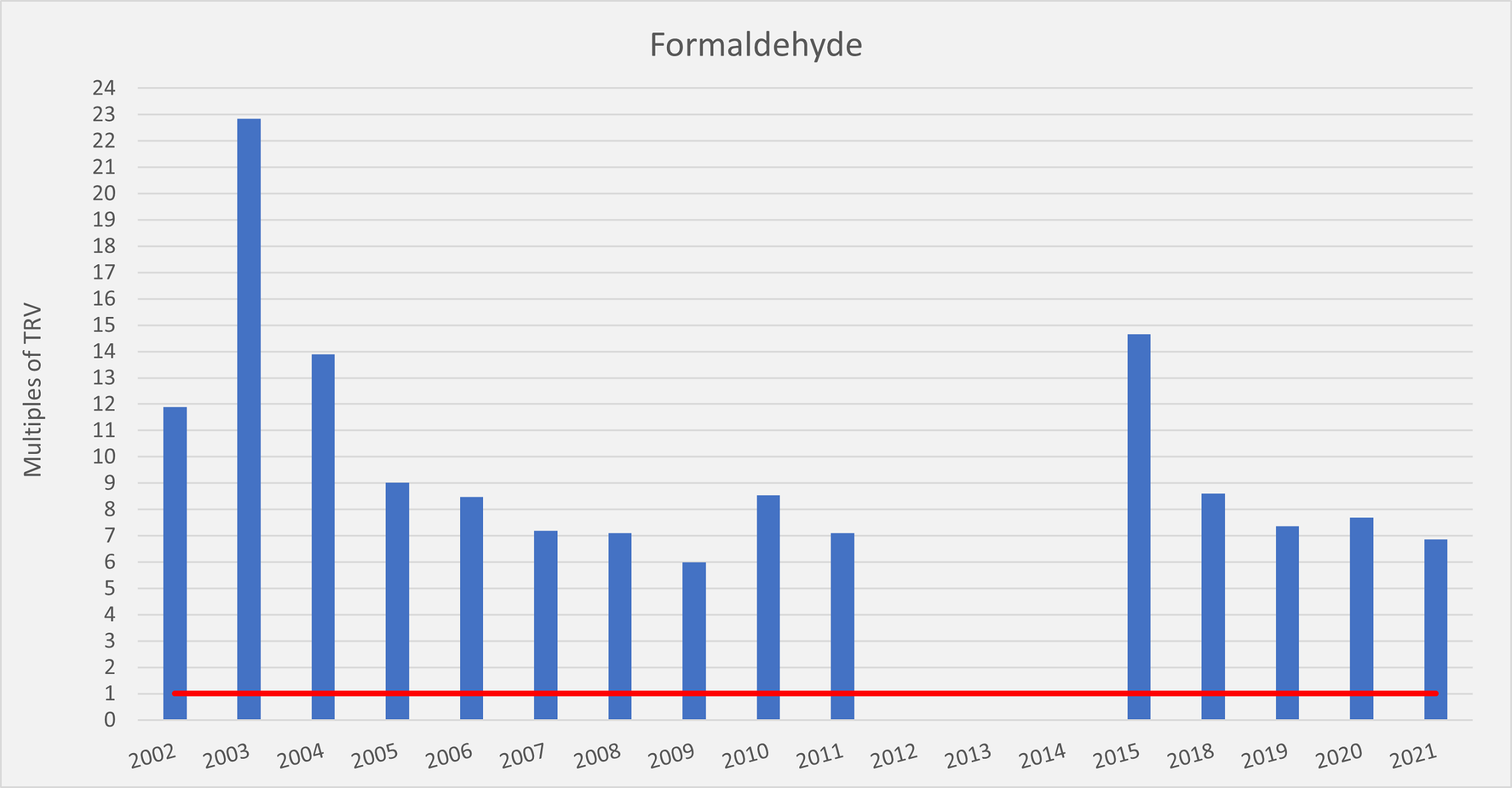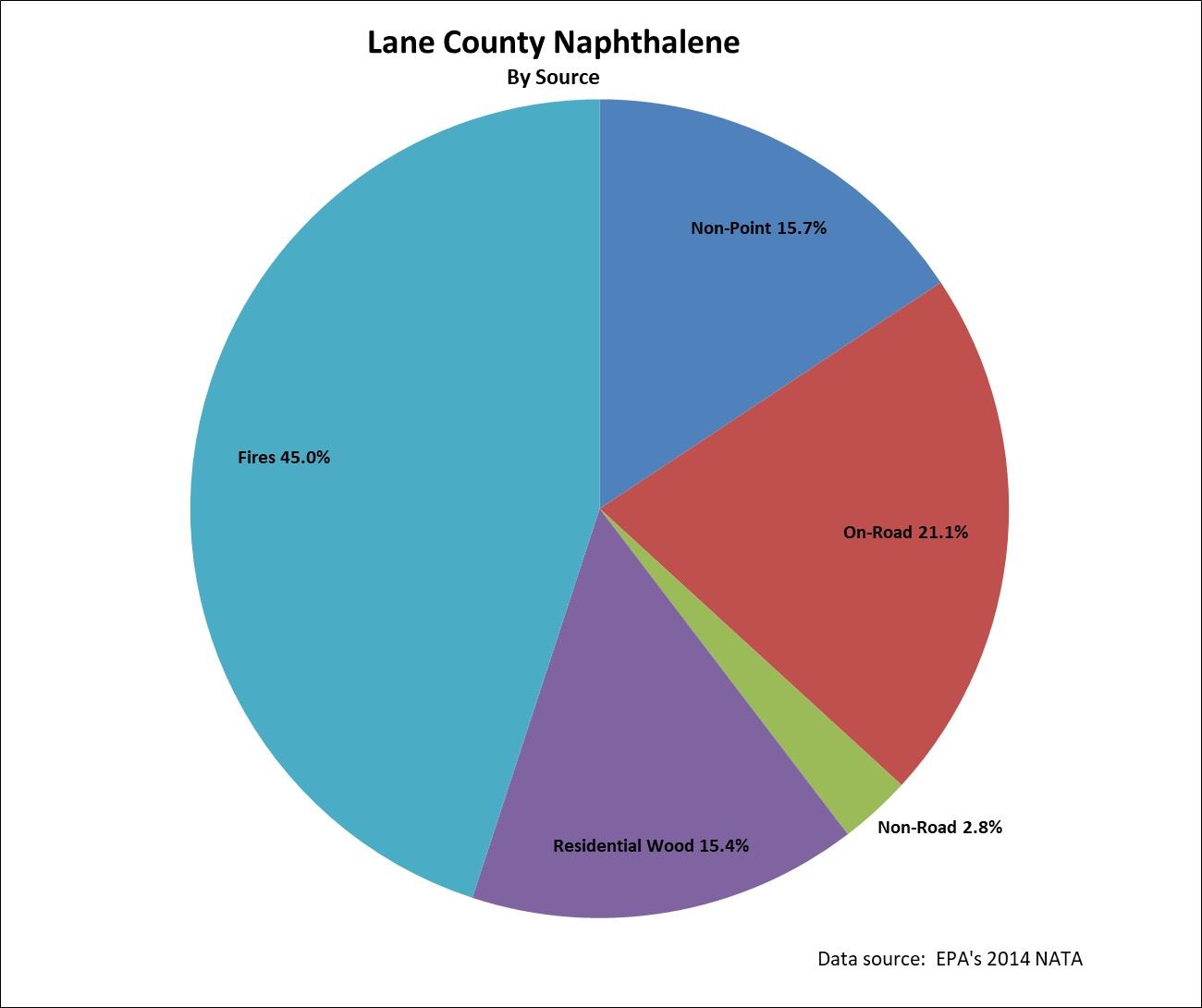Air Toxics
What are Air Toxics?
Air Toxics are pollutants that, at sufficient concentrations and exposures, are known or suspected to cause cancer, other serious health problems, or damage to the environment. There are nine air toxic monitors across Oregon. LRAPA operates two air toxics monitoring sites in Lane County – one in west Eugene near the intersection of HWY99 and Roosevelt Blvd., and one at the Willamette Activity Center in Oakridge. The pollutants of greatest concern are those released in large enough quantities to create a risk to human health, or in areas where many people are likely to be exposed.
Air Toxics exist in three types:
- Gases
- Liquid Aerosols
- Particles
Where do Air Toxics come from?
Most air toxics come from human-made sources such as vehicles (cars, buses, ships, planes), industrial facilities (factories, refineries, power plants), as well as small businesses and residences, including residential wood burning. Natural sources such as forest fires and volcanic eruptions also release air toxics and can affect air quality at local and regional scales. Some air toxics are carried into our area from sources outside our County – such as smoke from wildfires.
How are Air Toxics measured?
Each monitoring site utilizes multiple pieces of equipment which require significant resources to install, calibrate, and operate. Our air toxics sites monitor ambient air by taking samples deposited on or into media. Some of these samples are deposited onto filters, some are captured into stainless steel canisters. These samples are all shipped to a lab operated by Oregon’s Department of Environmental Quality (DEQ) where they are analyzed. The data from this analysis is then subjected to a quality control review before being published. This is a slow and expensive process and the reason that more widespread Air Toxics monitoring is not feasible with current technology. Air Toxics data is generally released annually, since the levels that we see are mostly associated with long term exposure risks.
Which Air Toxics are of concern in Lane County?
Air Toxics posing the most concern for public health in Lane County are acetaldehyde, arsenic, benzene, formaldehyde, naphthalene. LRAPA also measures and analyzes for many other air toxics but the previously mentioned toxics have historically been measured at levels above suggested toxicity reference values.
What are Toxicity Reference Values (TRV)?
A TRV is the amount of the chemical in air that may cause health problems. A TRV value of 1 or less is an acceptable exposure concentration, or dose of a contaminant of potential concern, that is not expected to cause an unacceptable level of effect on human health.
TRVs are currently used in Cleaner Air Oregon and other programs across the country. A TRV depends on the type of health effect (cancer or noncancer) and whether exposure is for a long or short period of time (chronic or acute).
A chemical can have up to three different TRVs.
- Noncancer acute
- Noncancer chronic
- Cancer
As of 2020, 259 chemicals have TRVs. Oregon TRVs were established in 2018. In Cleaner Air Oregon, TRVs are used to calculate risk based concentrations (RBCs) by integrating information about chemical exposure. LRAPA uses RBCs to evaluate health risks and determine whether the risk is above a level requiring a facility in the Cleaner Air Oregon program to take action.
2018 analysis of Oregon’s 10 Most Emitted Air Toxics
DEQ analyzed the U.S. Environmental Protection Agency’s 2018 Toxics Release Inventory data of estimated toxic chemical emissions to identify the ten most emitted chemicals in Oregon in 2018 and the facilities that are the largest sources of those emissions. View the analysis here.
Toxics of Concern in Lane County
Air Toxics Sources in Lane County
What are the different source categories?
Sources are group and categorized in different ways, below are definitions for each type:
- Biogenic: Biogenic emissions are released by natural and cultivated vegetation. These emissions are not typically subject to emission-control strategies.
- Fire: Fire emission sources are released by wildfires in and outside of Oregon, as well as from human actives like outdoor burning, or prescribed fires.
- Point: Point emission sources are any single identifiable source of pollution from which pollutants are discharged, such as a factory smokestack, vent, or other equivalent opening.
- Non-Point: Non-point emissions are sources of air pollution that, by themselves, generally have lower emissions than “major sources” of air pollution (like factories). Non-point sources can include smaller facilities, such as gas stations. In air quality modeling, non-point sources are modeled in two dimensions (length and width), as compared to point sources modeled at a single point location.
- On-Road: On-road emissions are from mobile sources, which include a wide variety of vehicles, engines, and equipment. On-road sources specifically refer to “on roadway” or highway sources which are specific to vehicles used on roads for transportation of passengers or freight.
- Non-Road: Non-road emissions are from mobile sources, which include a wide variety of vehicles, engines, and equipment. Non-road sources specifically refer to equipment used for construction, agriculture, recreation, and many other purposes.
- Residential Wood: Residential wood emissions are from wood burning that takes place primarily in woodstoves and fireplaces. Residential wood burning occurs either as a necessary source of heat or for aesthetics.
- Secondary: Secondary emissions are formed in the lower atmosphere by chemical reactions. Two examples are ozone and secondary organic aerosol (haze). Secondary emissions are harder to control because they have different ways of synthesizing and form naturally in the environment to create problems like smog.
Acetaldehyde in Lane County
What is it?
Acetaldehyde is a colorless, flammable liquid that evaporates easily into the air. It is a product of incomplete combustion of fuels and wood and is also used in the manufacture of other chemicals and products including perfumes and dyes.
Where does it come from?
The dominant source of acetaldehyde in the Eugene area is secondary formation. It is also present in smoke from residential wood stoves and fireplaces, and gasoline powered engines.
What are the health effects?
Animal studies have shown that acetaldehyde caused nasal and laryngeal tumors. EPA considers acetaldehyde to be a probable (Class B2) human carcinogen. The Oregon toxicity reference value concentration for acetaldehyde is 0.45 μg/m3. Monitoring shows that the Eugene area is above this benchmark.
Arsenic in Lane County
What is it?
Pure inorganic Arsenic is a naturally occurring gray-colored metal found throughout the environment. Inorganic arsenic is usually found combined with other elements such as oxygen, chlorine and sulfur. Arsenic in plants and animals combines with carbon and hydrogen. This is called organic arsenic and is generally less toxic than inorganic arsenic. Most arsenic compounds have no odor and dissolve in water.
Where does it come from?
Sources of arsenic are both human caused and natural. Our soils in the Pacific Northwest are naturally high in arsenic because of their volcanic origins. In Oregon, metal processing, agricultural pesticides, and soil dust are sources of arsenic. Oil and natural gas combustion and on-road and non-road engines are other sources of arsenic.
What are the health effects?
Breathing inorganic arsenic over a long period of time is associated with irritation of the skin and mucous membranes, and is strongly associated with lung cancer. EPA considers arsenic a known (Class A) human carcinogen. The Oregon toxicity reference value concentration for arsenic is 0.00023 ug/m3. Monitoring shows that the Eugene area is above this benchmark.
Benzene in Lane County
What is it?
Benzene is a colorless liquid with a sweet odor. It evaporates into the air quickly and dissolves slightly in water. It is highly flammable and is formed from both natural processes and human activities.
Where does it come from?
Benzene is found in natural background concentrations, emissions from cars and trucks, wood smoke, evaporation from gasoline, and industrial solvents. Tobacco smoke contains benzene.
What are the health effects?
Long-term inhalation of benzene causes blood disorders. Benzene specifically affects bone marrow, the tissues that produce blood cells. Benzene may cause anemia (i.e., an insufficient number of healthy red blood cells), excessive bleeding, damage to the immune system and genetic damage. Increased incidence of leukemia (cancer of the tissues that form white blood cells) has been observed in people occupationally exposed to benzene. EPA has classified benzene as a known (Class A) human carcinogen. The Oregon toxicity reference value concentration for benzene is 0.13 μg/m3. Monitoring shows that the Eugene area is above this benchmark.
Formaldehyde in Lane County
What is it?
Formaldehyde is a colorless gas with a pungent, suffocating odor at room temperature. It is produced by human activities and occurs naturally.
Where does it come from?
Formaldehyde comes from secondary formation, incomplete fuel combustion from on and off-road engines, construction equipment, diesel fuel combustion, railroads, as well as from wood burning. It is used as a concrete and plaster additive, as a disinfectant, and as a wood preservative. The highest levels of airborne formaldehyde have been detected in indoor air, where it is released from various consumer products including paneling and carpets. Tobacco smoke is another important source of formaldehyde.
What are the health effects?
Breathing formaldehyde is associated with respiratory problems and eye, nose, and throat irritation. Limited human studies have reported associations between work-related exposure to formaldehyde and increased incidence of lung and nasal cancer. EPA considers formaldehyde to be a probable (Class B1) human carcinogen and is currently proposing revisions to its toxicity values. The Oregon toxicity reference value concentration for formaldehyde is 0.17 μg/m3. Monitoring shows that the Eugene area is above this benchmark.
Naphthalene in Lane County
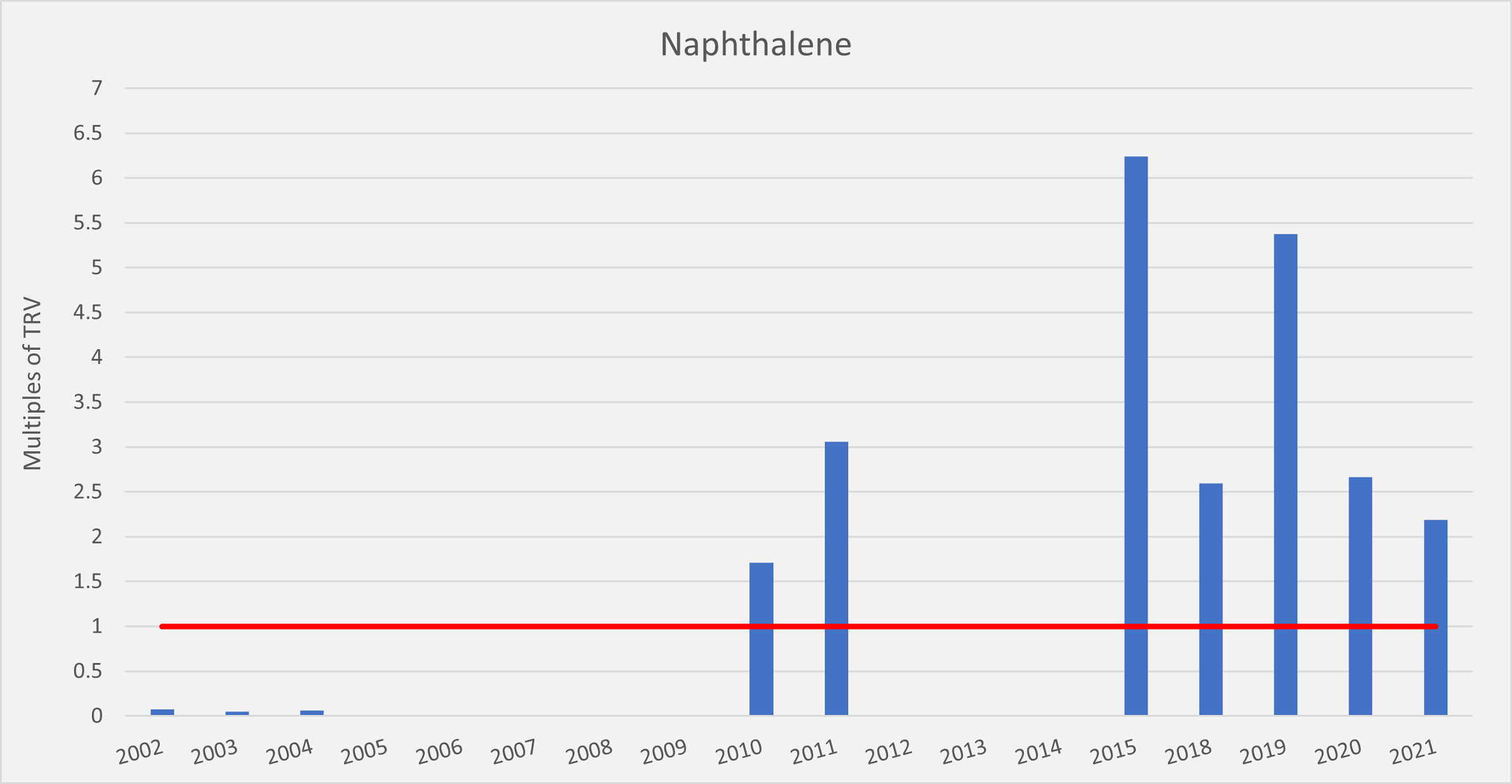
What is it?
Naphthalene is a white solid that evaporates easily. Fuels such as petroleum and coal contain naphthalene. It is also called white tar, and tar camphor, and has been used in mothballs and moth flakes. Burning tobacco or wood produces naphthalene. It has a strong, distinct odor. The major commercial use of naphthalene is in the manufacture of polyvinylchloride (PVC) plastics. Its major consumer use is in moth repellents.
Where does it come from?
Naphthalene is released to the air from the burning of diesel or fuel oil and from the use of mothballs. Some naphthalene is also produced by residential wood combustion. Naphthalene is present in creosote that is used in local wood preservation facility operations.
What are the health effects?
Chronic exposure of workers and rodents to naphthalene has been reported to cause cataracts and damage to the retina. As of 1998, available data was not, in EPA’s opinion, adequate to establish a causal association between exposure to naphthalene and cancer in humans. It was classified as a possible (Group C) carcinogen at that time and remains so at present. The Oregon toxicity reference value concentration for naphthalene is 0.029 μg/m3. Monitoring shows that the Eugene area is above this benchmark.
At the request of west Eugene Residents, LRAPA requested the Oregon Health Authority (OHA) provide a public health interpretation of naphthalene concentrations measured at LRAPA’s air toxics monitoring site located at HWY 99 and Elmira Rd. OHA provided the letter to LRAPA in February of 2022 and can be read by clicking here.


